There can be your advertisement
300x150
Stalinist Skyscrapers: How Soviets Built Tall Buildings Without Modern Technology
Tall buildings that have stood for nearly 80 years and remain symbols of Moscow
On September 7, 1947, Moscow simultaneously laid the foundations of eight tall buildings—a gift for the 800th anniversary of the capital. Ten years later, seven of them adorned the Moscow skyline, becoming symbols of post-war revival in the USSR. According to historian of architecture Vladimir Paperny, construction of tall buildings marked the beginning of a grand architectural project with the goal of building tall structures throughout Moscow. But how were 240-meter skyscrapers built in a country where nothing higher than five stories had ever been constructed?
Main points from the article:
- Technology of monolithic reinforced concrete had to be mastered, and new production facilities created;
- Soil around foundations was frozen with brine at -25°C to a depth of up to 27 meters;
- The building at Red Gates was constructed at an incline so that it would stand vertically after the soil thawed;
- Self-rising cranes were specially invented for construction;
- The main building of Moscow State University was built on a box foundation—an innovative solution by engineer Nikolai Nikitin.
Calling the Era: From Five-Story Buildings to Skyscrapers
In 1947, the USSR was a country of low-rise construction. Soviet building at that time focused on brick buildings no higher than five stories. The tallest structures were Stalinist apartments, standing 7–9 floors, but they were far from American skyscrapers.
Stalinist high-rise architecture echoed the style of municipal buildings on Manhattan, the Woolworth Building, and the tallest skyscraper at the time—the Empire State Building in New York. While Manhattan stood on solid rock, Moscow was built on hills and swamps.
Best specialists of the time were recruited for construction, but they had to solve problems never faced before in the USSR.
Revolution in Materials and Technology
To build a 136-meter high-rise, the technology of monolithic reinforced concrete had to be mastered. This required new materials and equipment, leading to the creation of entire production facilities.
Progressive technologies were used: steel frame instead of load-bearing brick walls, lightweight wall materials—hollow bricks, ceramic and gypsum hollow blocks. This was a revolution in Soviet construction.
During the construction of the Leningrad Hotel, a powerful concrete pump was used, capable of pumping concrete to a height of up to 40 meters. This type of equipment did not exist in the USSR before.
Self-rising cranes were even invented for their construction, allowing the high-rises to be built at unprecedented speeds. These mechanisms could lift construction materials to heights over 200 meters.
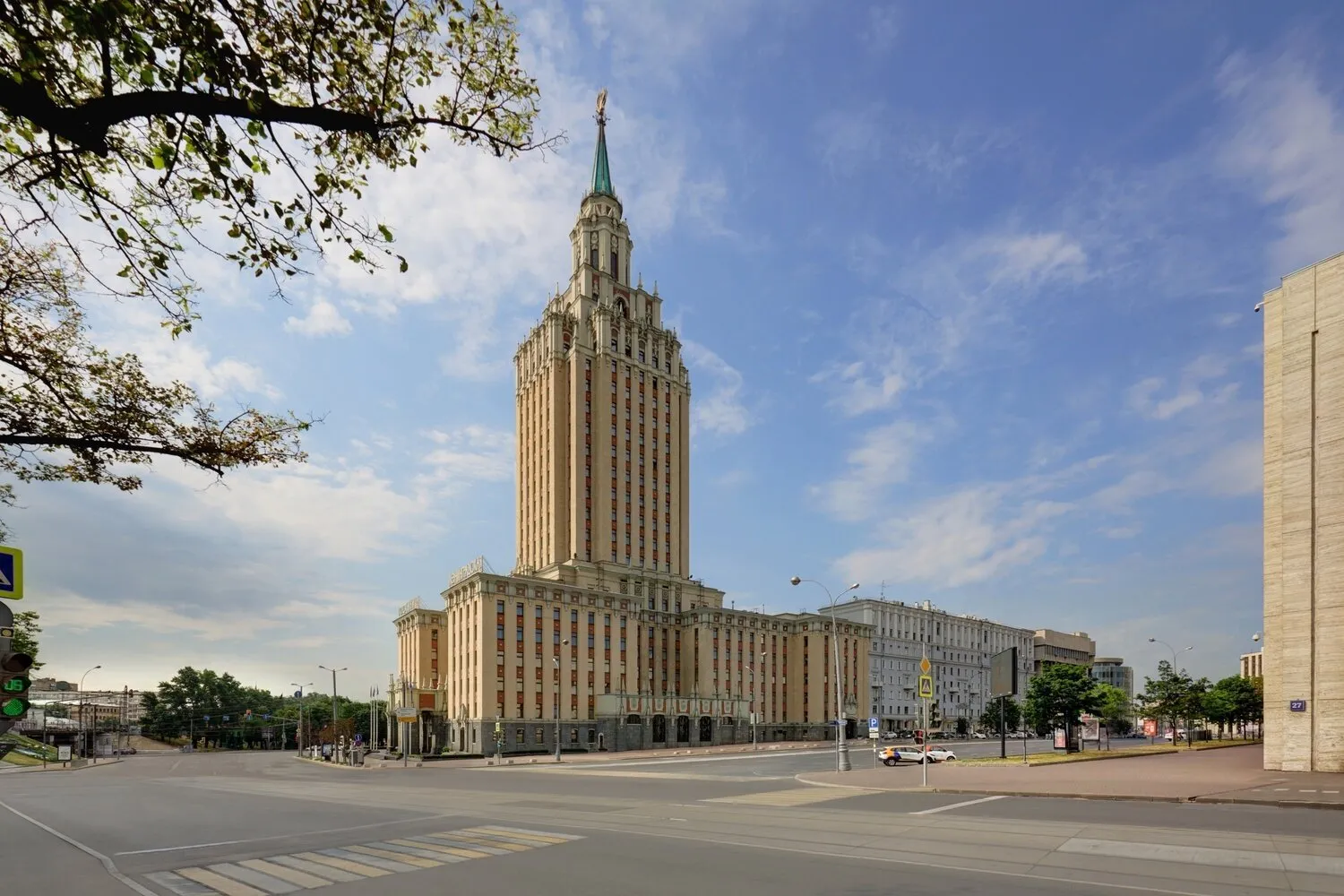 Photo from website: pegast.ru
Photo from website: pegast.ruSoil Freezing: A Metro Technology
The most challenging task was the weak Moscow soil. In case of construction on unstable ground—referred to as 'floating ground'—it could be frozen. This technology had already been successfully used in subway construction.
Before digging the foundation pit, the soil around the future excavation was artificially frozen for nine months to a depth of 27 meters. The soil was frozen using a system of wells and pipes filled with calcium chloride brine at temperatures ranging from -20°C to -26°C.
Hundreds of pipes were driven around the building foundations, connected into a single system through which the special brine was circulated, cooled to -25°C. This technology created an ice wall that prevented the foundation pit from collapsing.
Construction at an Angle: A Unique Experiment
During the construction of the high-rise at Red Gates, the decision was made to freeze the soil around the foundation pit for additional reinforcement. To prevent the building from deviating due to soil swelling, the structure was built at a slight angle.
Engineers knew that when soil freezes, it expands and lifts one side of the foundation. Calculations showed that the maximum deviation would be 16 cm. The building was constructed at this angle and then, after thawing, it tilted back within acceptable limits.
This method was never used again due to the complexity of calculations. The design was done by constructor Viktor Abramov, and the building itself was designed by Alexei Dushkin—author of subway stations such as Mayakovskaya, Kropotkinskaya, and Revolution Square.
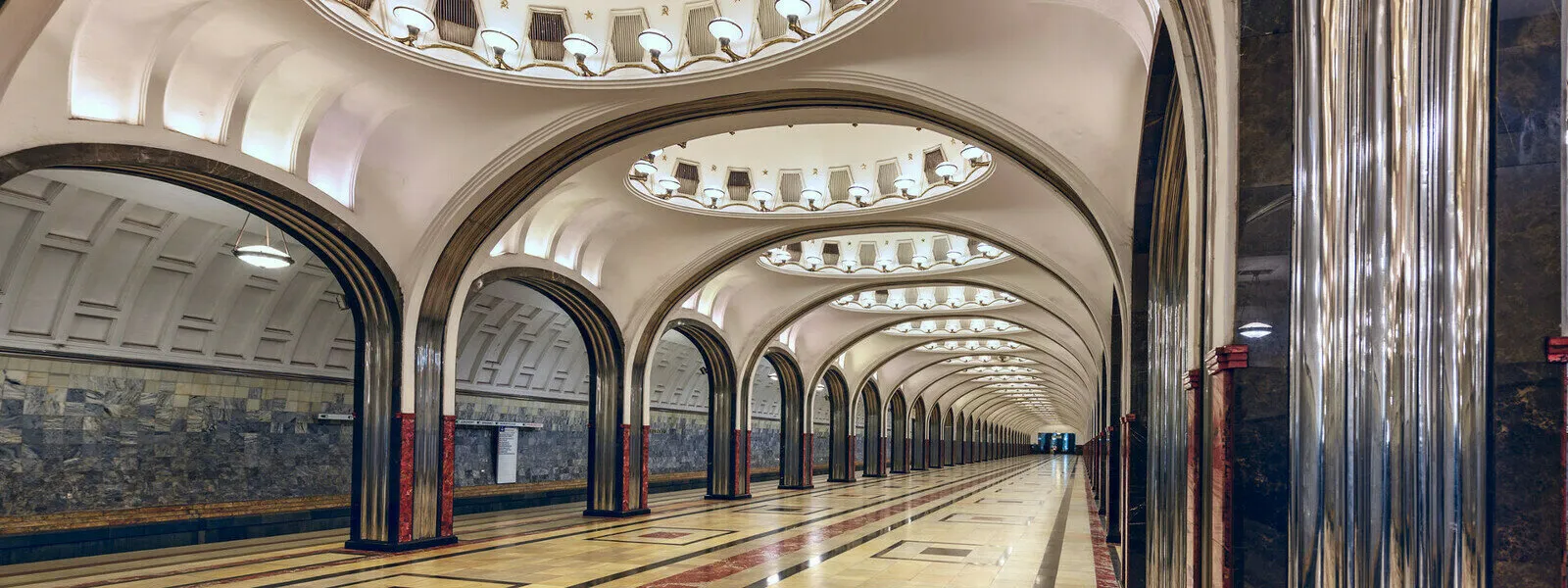 Photo from website: sd.suza.sk
Photo from website: sd.suza.skBox Foundation: A Creation by Nikitin
The foundation and frame of the main building of Moscow State University were designed by engineer Nikolai Nikitin, later famous as the creator of the Ostankino Tower.
Nikitin proposed constructing the MSU building on a box foundation—a hermetic reinforced concrete box of small height but with dense walls. The foundation was made so large that the mass of excavated soil would equal the mass of the future building. To achieve this, an 18-meter deep pit had to be dug.
Engineer calculated that construction on unstable soil was possible if the swelling of the soil could be 'tamed'. For this, the foundation had to 'float' in the ground inside hollow concrete boxes. Welded box sections would level out the building's settlement and neutralize the soil's reactive behavior.
Another engineer solution was steel columns with a cruciform cross-section and freely suspended slabs. This allowed the construction of high-rise buildings without thermal or settlement joints.
Combating Water: Needle Filters and Piles
During the construction of the Ukraine Hotel, the bottom of the foundation pit had to be dug 8 meters below the groundwater level—only 70 meters from the river. To prevent the pit from turning into a pool, a double wall of needle filters was installed around it.
During the construction of the Leningrad Hotel, groundwater created special challenges. To prevent the building from sinking into the ground, the foundation had to be reinforced using a complex technology.
First, hollow metal pipes up to 10 meters long were driven into the ground. Then, rebar was inserted inside and filled with plastic concrete. After the mixture hardened, the pipes were extracted. Using this method, 1400 piles were constructed for foundation reinforcement.
 Photo from website: um.mos.ru
Photo from website: um.mos.ruSubway in a Skyscraper: An Engineering Marvel
The high-rise at Red Gates was the only one of the seven where a surface subway vestibule was built. The simultaneous construction of the skyscraper and additional subway exits posed engineers with a complex challenge, worsened by water-saturated soil conditions.
The escalator in this vestibule was interrupted by an intermediate landing and then continued at a different angle. The turn was necessary due to the floating ground.
Usually, underground work would be completed first, and then construction proceeds, but that would have delayed the building project by about 1.5 years, which was not an option.
Construction 'From Top to Bottom'
During the construction of the Ministry of Foreign Affairs building, the most advanced technologies of that time were used. The high-rise was built 'from top to bottom'. First, a steel frame was erected, followed by sequential concreting from the top floor downward.
This method accelerated construction and ensured better accuracy in assembly. The steel frame was assembled like a giant constructor, then encased in concrete and brick.
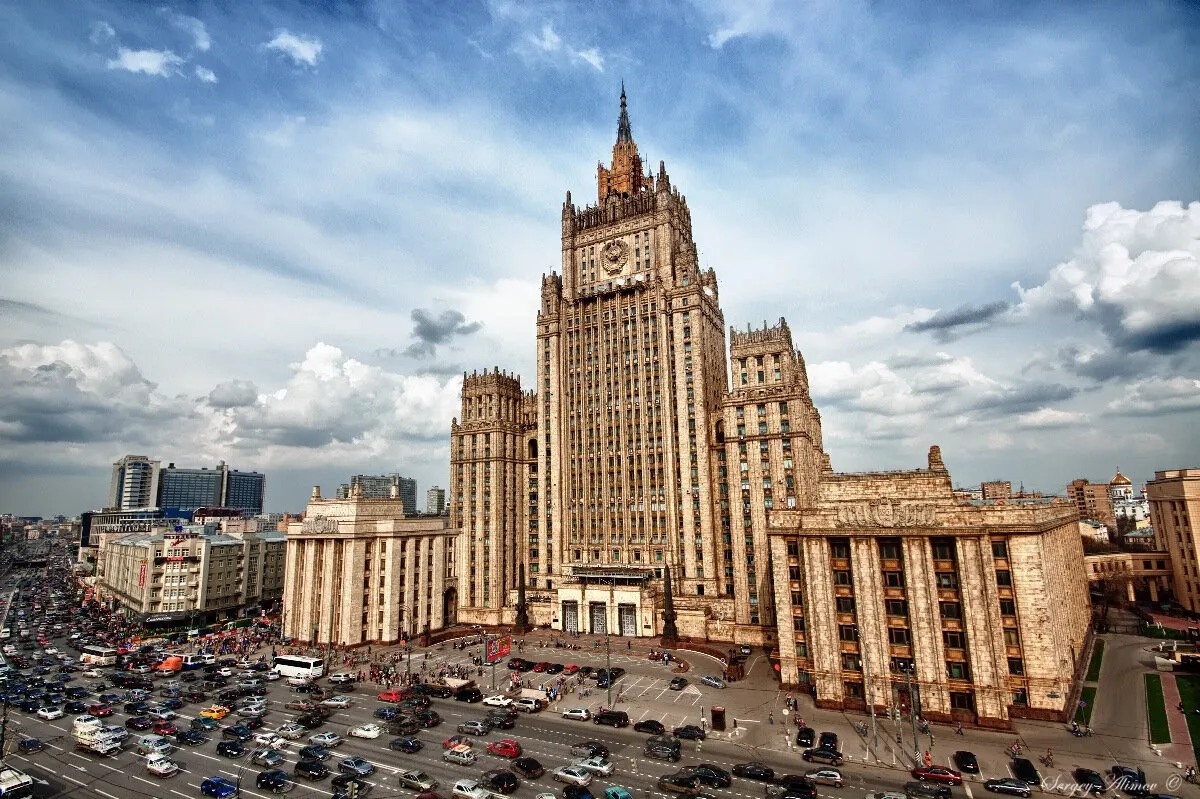 Photo from website: drive_w2.ru
Photo from website: drive_w2.ruNew Life Support Systems
Just like in other Stalinist high-rises, here were some of the first air conditioning and air purification systems in the country. These were experimental installations developed specifically for high-rise buildings.
One star on the building’s spire weighs 12 tons. To make such a large structure comfortable for people to use, MSU installed 68 elevators, including high-speed ones.
During the construction of the main MSU building, a conflict arose between fire safety inspectors and builders who categorically refused to place all metal elements into concrete casings. In the end, the builders won, proving the strength of their solutions.
The Price of Experimentation
Stalin himself determined the construction site and controlled the timeline of this grand project, so architects and engineers had no time for long deliberations. As a result, sometimes certain risks and budget increases were necessary.
Architects of the Leningrad Hotel, Alexander Boretsky and Leonid Polyakov, were initially awarded the Stalin Prize for their project but nearly ended up in prison after a change in power due to criticism—its excessive elegance was deemed 'excessive'.
One of the first completed residential high-rises was built on Kotelnicheskaya Embankment. The construction was entrusted to the Main Administration of Prison Construction of the MVD, with primary labor force consisting of prisoners and German POWs.
The Legacy of Engineering Thought
Stalinist high-rises became a testing ground for technologies later used throughout the country. The construction of tall buildings 'spread beyond Russia (Riga) and even the USSR (Warsaw), replicating exactly the same high-rise buildings as in Moscow.
Soil freezing, box foundations, steel frames—all of these became standards of Soviet construction. The experience of Moscow high-rises helped build the Ostankino Tower and master construction on permafrost in Siberia.
Before the construction of 'Triumph-Palace', the main building of Moscow State University on Sparrow Hills was the tallest structure in Moscow for more than half a century: 240 meters high, with 36 floors in the central volume.
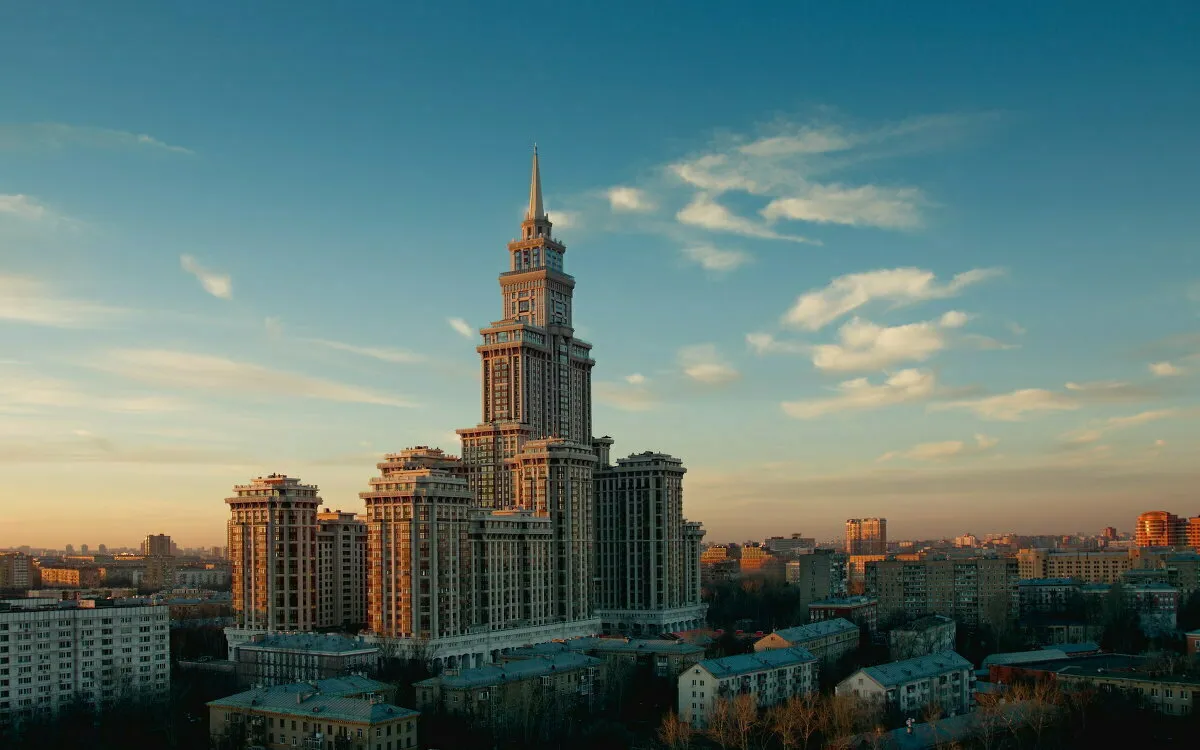 Photo from website: fotokto.ru, Yevgeny Polyakov
Photo from website: fotokto.ru, Yevgeny PolyakovSeven Stalinist high-rises proved that Soviet engineers could solve any complex problem. Without supercomputers or modern materials, using only slide rules and engineering ingenuity, they created skyscrapers that have stood for nearly 80 years and remain symbols of Moscow.
Cover from website: foto-leto.ru
More articles:
 What the Perfect Apartment Looks Like Through a Designer's Eyes: A Space You'll Want to Live In
What the Perfect Apartment Looks Like Through a Designer's Eyes: A Space You'll Want to Live In Personal Experience: How We Furnished a Cozy Country House in Istra in Two Months
Personal Experience: How We Furnished a Cozy Country House in Istra in Two Months House in the Suburbs Designed by an Interior Designer for Herself and Her Family
House in the Suburbs Designed by an Interior Designer for Herself and Her Family Stylish and Thoughtfully Designed Kitchen in a 65 sqm Loft
Stylish and Thoughtfully Designed Kitchen in a 65 sqm Loft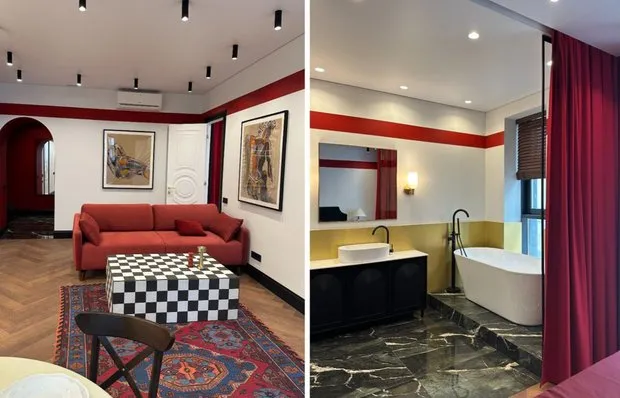 Bold and Unconventional Solutions in a Vibrant 80 m² Trash Style
Bold and Unconventional Solutions in a Vibrant 80 m² Trash Style When Interior Starts with Color: How to Choose a Palette You Won't Get Tired Of
When Interior Starts with Color: How to Choose a Palette You Won't Get Tired Of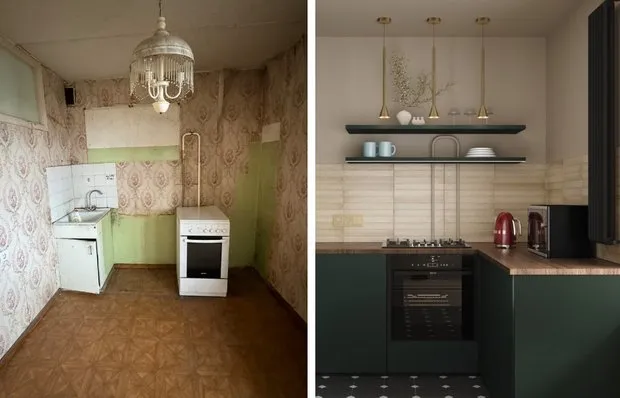 How We Redesigned an 8 m² Kitchen in a Brezhnev-Era Apartment to Make It Bigger and More Modern (Before and After)
How We Redesigned an 8 m² Kitchen in a Brezhnev-Era Apartment to Make It Bigger and More Modern (Before and After)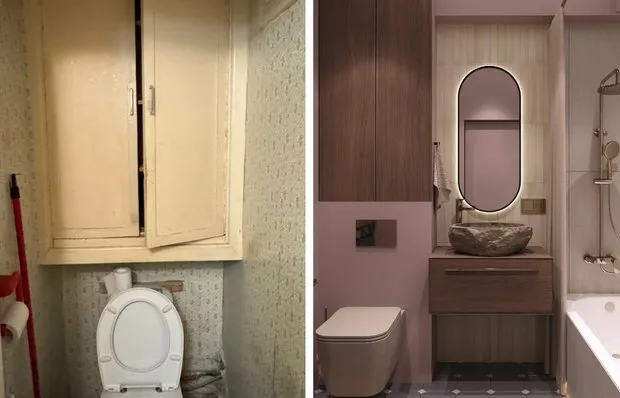 Before and After: How a 3 sqm Bathroom Was Transformed Into a Relaxation Zone
Before and After: How a 3 sqm Bathroom Was Transformed Into a Relaxation Zone